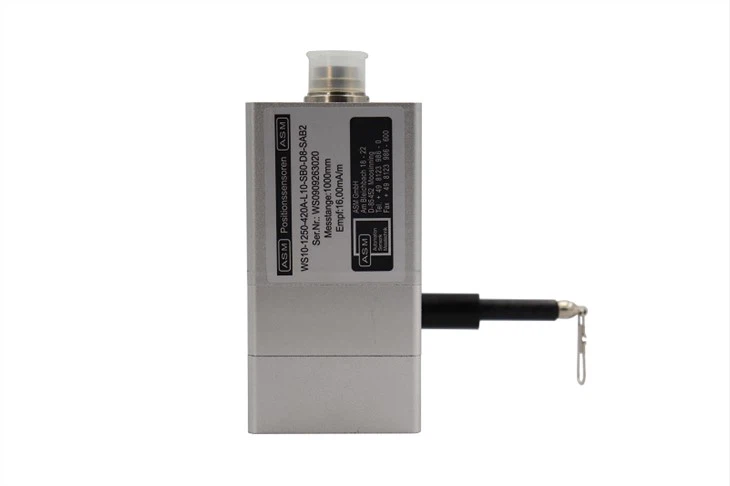

A draw wire displacement sensor, also known as a cable extension sensor or string potentiometer, is a device used to measure linear displacement or position. It consists of a flexible cable or wire wound around a spool and attached to the moving object whose position needs to be measured. As the object moves, the cable extends or retracts, causing the spool to rotate. The rotation of the spool is converted into an electrical signal that corresponds to the linear displacement of the object .
Cable and Spool: The draw wire displacement sensor consists of a flexible cable or wire wound around a spool. One end of the cable is attached to the moving object, and the other end is connected to a spring or tension mechanism.
Attachment Points: The object's movement causes the cable to extend or retract from the spool. The cable is typically attached to a fixed point on the object and wound around the spool, which is connected to a sensor housing.
Rotary-to-Linear Conversion: As the cable extends or retracts, the spool rotates. The rotation of the spool is proportional to the linear displacement of the moving object.
Potentiometer or Encoder: The spool's rotation is often used to turn a potentiometer or an encoder, converting the rotational movement into an electrical signal.
Output Signal: The electrical signal generated by the potentiometer or encoder corresponds to the linear displacement of the moving object. This signal can be analog (voltage or current) or digital, depending on the sensor design.
Simple Design: Draw wire displacement sensors have a relatively simple design, making them easy to install and use.


Industrial machinery: Measuring the position of moving parts, actuators, and equipment.
Automotive: Position sensing in throttle pedals, suspension systems, and adjustable components.
Robotics: Monitoring the position of robotic arms, grippers, and linear actuators.
Aerospace: Position measurement in control surfaces, landing gear, and mechanisms.
